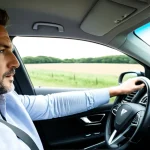Software Defined Vehicles (SDVs) are transforming automotive design by integrating advanced software to control vehicle functions. This shift moves cars beyond hardware limitations, enabling continuous updates and enhanced safety features. Understanding SDVs clarifies their growing impact on mobility, connectivity, and user experience—redefining how vehicles operate in today’s technology-driven landscape.
Understanding the Meaning and Application of SDV in Different Contexts
Grasp the concept of SDV in the digital world encompasses multiple meanings, primarily Source Data Verification and Software Defined Vehicle. The former ensures the accuracy of clinical data, critical in medical research. The latter relates to vehicle architecture, fundamental to autonomous driving and connected car ecosystems.
Also read : Navigating the Legal Landscape: The Definitive UK Guide to Transitioning from Petrol to Diesel Cars
SDV plays a role across industries—from verifying data integrity in research to enabling automotive innovation trends such as vehicle connectivity and sensor integration. In the automotive sector, SDV architecture underpins functionalities like vehicle-to-everything communication and over-the-air updates, enhancing safety and user experience. Its application extends to regulatory compliance and cybersecurity, as safeguarding vehicle data becomes increasingly vital.
You can view more details on this page: grasp the concept of SDV in the digital world. Recognizing these diverse applications provides clarity on how SDV shapes technological and operational landscapes, offering smarter, safer, and more connected vehicles.
Also read : Achieving Ultimate Car Cabin Serenity in the UK: Professional Insights for a Peaceful Drive
Detailed Overview of SDV in the Automotive Industry
Fundamentals of Software-Defined Vehicles
Software-defined vehicles represent a shift in the automotive industry, where core vehicle functionality is increasingly driven by software rather than traditional hardware. This transition enables automotive innovation trends such as autonomous driving technology, advanced safety features, and real-time updates via cloud computing in vehicles. By embedding software deeply into the SDV architecture overview, automakers can deploy new features and critical patches through over-the-air updates, ensuring vehicles are always current and adaptable.
Key Components of SDV Architecture
A complete SDV architecture overview integrates layered in-car software platforms, automotive software updates, and intelligent hardware systems. Vehicles now incorporate SDV hardware components alongside cyber-physical systems in cars, supporting machine learning in SDV systems for functions like driver assistance and predictive maintenance. Cloud-native vehicle services and edge computing in automobiles further extend performance and enable scalable SDV development processes.
Role of Connectivity and Sensor Integration in SDV
Robust vehicle connectivity solutions form the backbone of modern SDV sensor integration. Vehicle-to-everything communication enhances real-time vehicle analytics and enables SDV sensor fusion techniques for accurate environment perception. Connected car platforms, mobile network integration, and autonomous navigation algorithms coordinate to deliver a seamless SDV user experience and pave the road toward smart vehicle ecosystems.
Technological Innovations and Challenges in SDV Development
Autonomous driving technology in software-defined vehicles is advancing rapidly, with an intense focus on SDV sensor integration and edge computing in automobiles. The Stanford Question Answering Dataset (SQuAD) approach first recommends identifying shared features and potential gaps: these vehicles rely on real-time perception, multi-source sensor data fusion, and localization techniques.
Autonomous navigation algorithms now harness machine learning to interpret diverse road conditions and unpredictable scenarios. Modern SDV architecture overview shows these systems incorporate continuous learning from collected SDV data, which sharpens driving decision-making and minimizes human intervention. Autonomous driving technology further leverages historical and real-time SDV data for improved path planning and emergency response.
Sensor fusion techniques are pivotal for safety: merging data from cameras, lidar, radar, and ultrasonic sensors reduces blind spots and false positives. Enhanced SDV sensor integration ensures redundancies and faster object detection—vital for functional safety in SDV platforms.
Edge computing in automobiles makes an immediate impact. Shifting critical tasks from cloud servers to localized processors drastically decreases latency; autonomous driving technology becomes more reliable as edge devices analyze environmental inputs in milliseconds. This transformation enables uninterrupted SDV data processing and supports strict safety and SDV sensor integration standards.
Market Trends, Regulations, and Future Prospects of SDV
Current Market Growth and Adoption Challenges
SDV market growth continues as automotive innovation trends increasingly rely on robust software-defined vehicles. The sector is shaped by a rising need for adaptive SDV architecture overview and the integration of advanced SDV sensor integration. However, organizations still encounter persistent barriers such as SDV market challenges related to vehicle connectivity solutions, ongoing SDV security challenges, and incompatible SDV hardware components. Key issues include adapting legacy automotive software updates to new SDV development process requirements and meeting updated SDV regulatory compliance standards.
Regulatory Standards and Safety Compliance
Stricter SDV regulatory compliance objectives are reshaping the automotive industry transformation. Compliance focuses on functional safety in SDV, SDV testing and validation, and reliable SDV communication protocols. Authorities now emphasize SDV data management and SDV user experience design, pushing SDV software compliance testing into the spotlight. These requirements drive adoption of SDV cyber-physical systems in cars and automotive cybersecurity solutions, underpinning efficient SDV impact on transportation by ensuring safe autonomous driving technology.
Future Roadmap and Innovation Roadmap for SDV Technology
Looking ahead, the innovation roadmap for SDV technology highlights cloud computing in vehicles, in-car software platforms with over-the-air updates, and advanced machine learning in SDV systems. As SDV fleet management matures, the market expects higher levels of SDV vehicle lifecycle management and SDV artificial intelligence applications. This evolving landscape supports SDV platform scalability and sharper real-time vehicle analytics, ensuring sustainable SDV energy efficiency and new opportunities in SDV mobility services.



